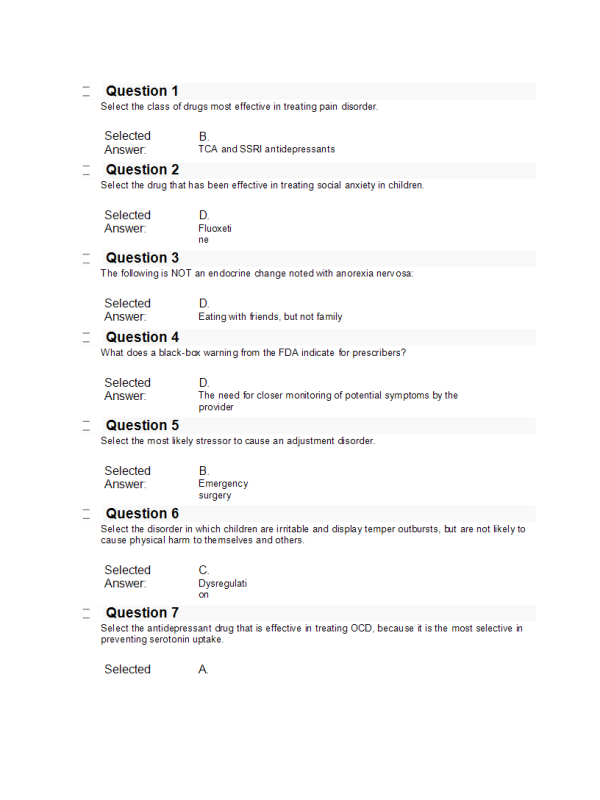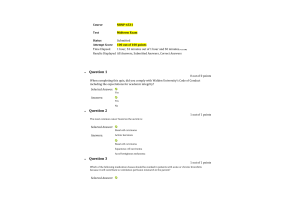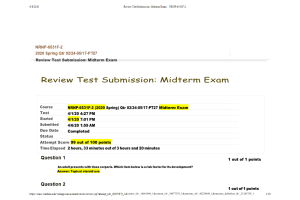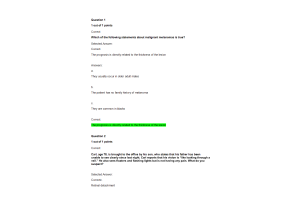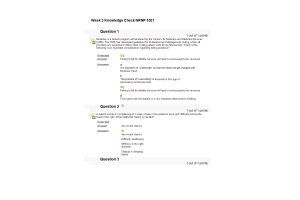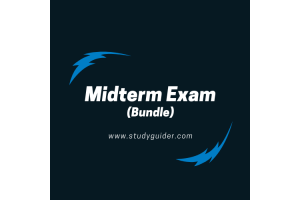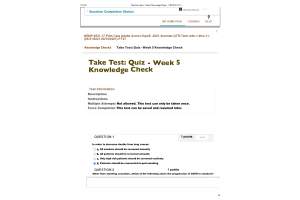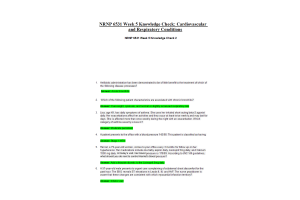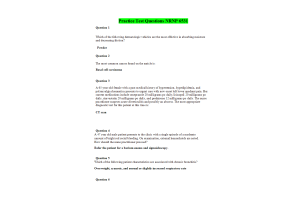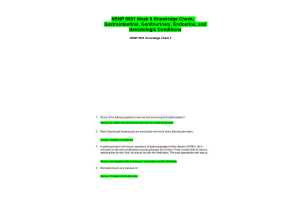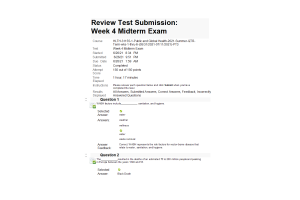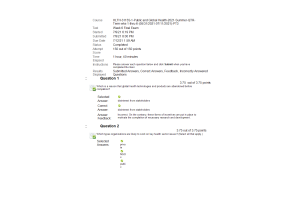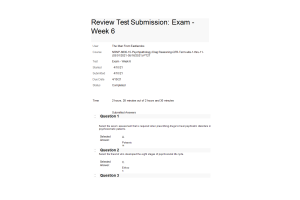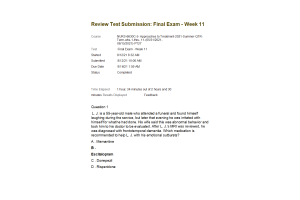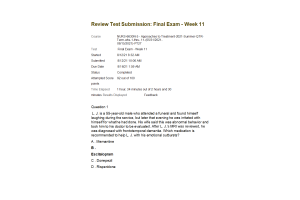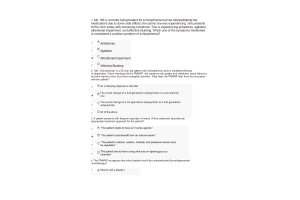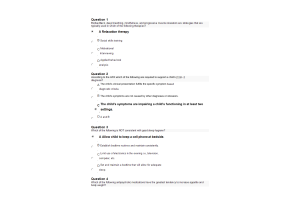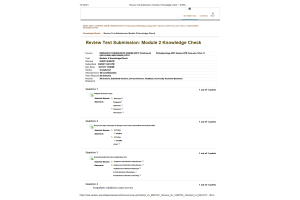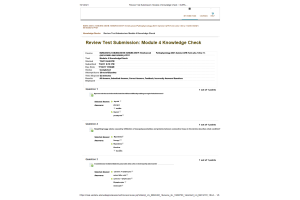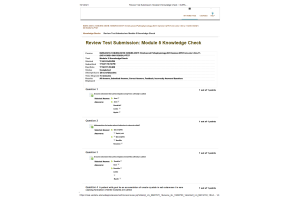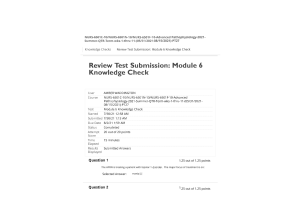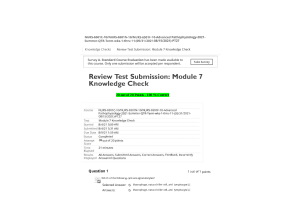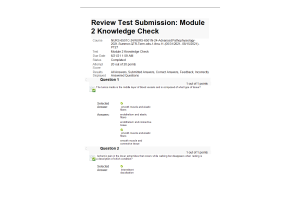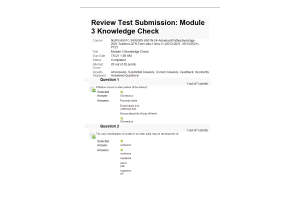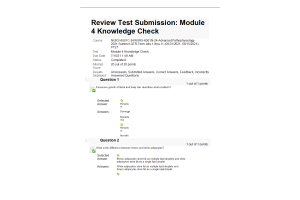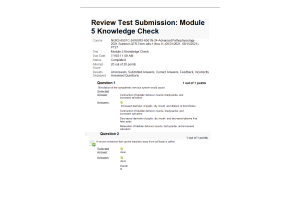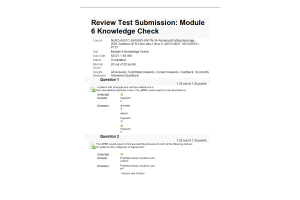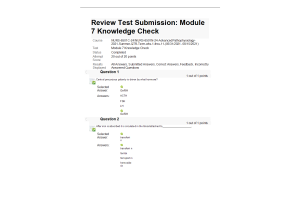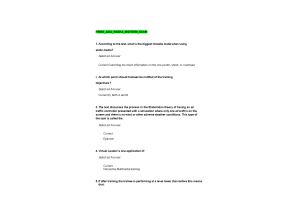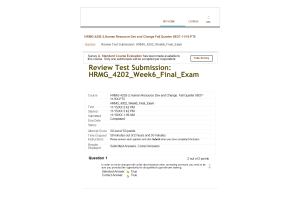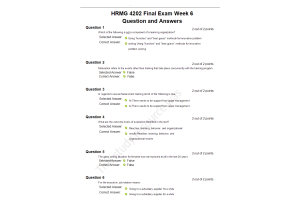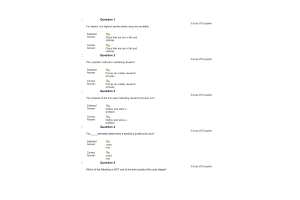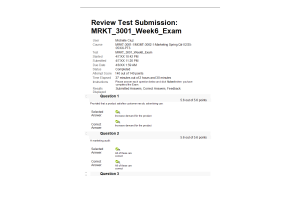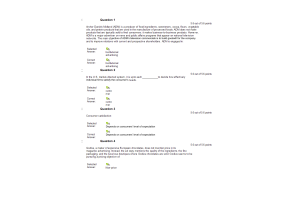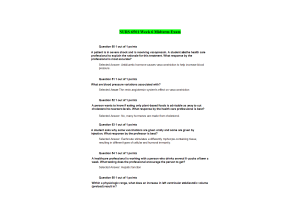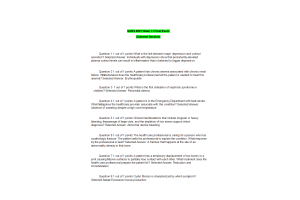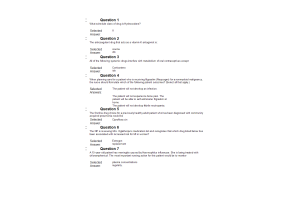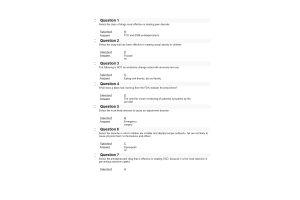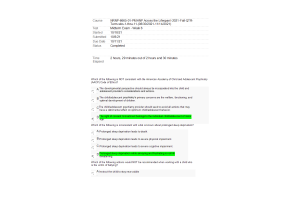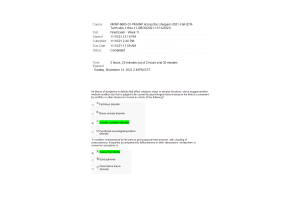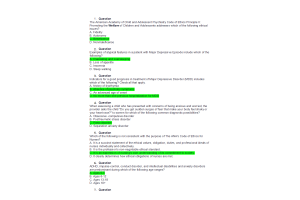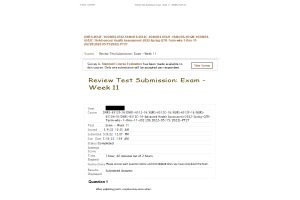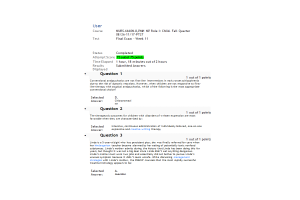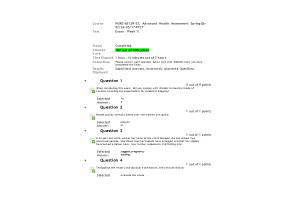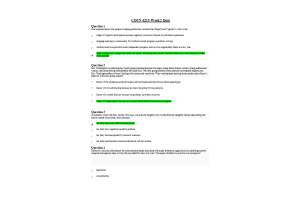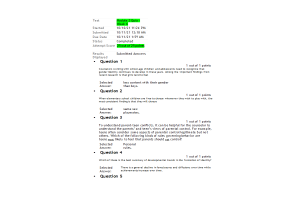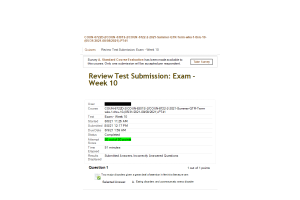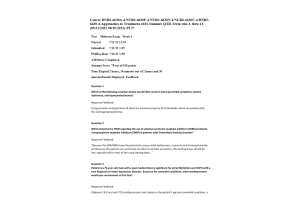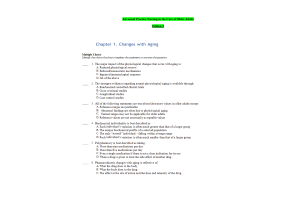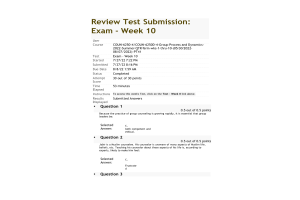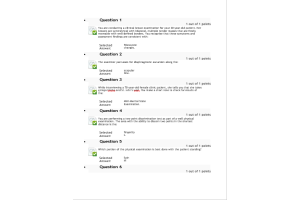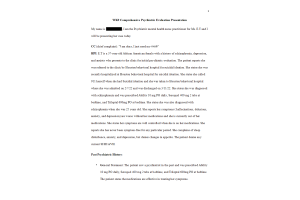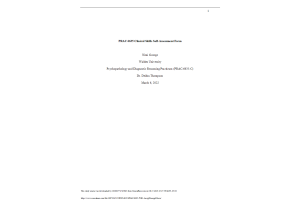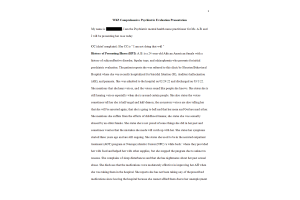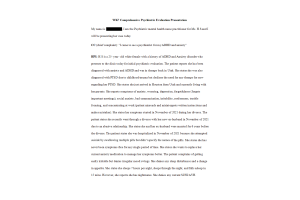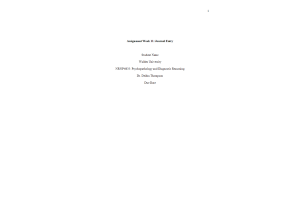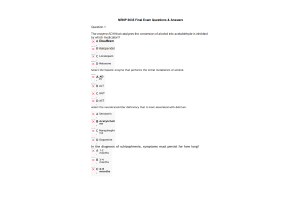NRNP 6635 Week 6 Midterm Exam - 100% Correct
- $55.00
- Question: Select the class of drugs most effective in treating pain disorder.
- Question: Select the drug that has been effective in treating social anxiety in children.
- Question: The following is NOT an endocrine change noted with anorexia nervosa:
- Question: What does a black-box warning from the FDA indicate for prescribers?
- Question: Select the most likely stressor to cause an adjustment disorder.
- Question: Select the disorder in which children are irritable and display temper outbursts, but are not likely to cause physical harm to themselves and others.
- Question: Select the antidepressant drug that is effective in treating OCD, because it is the most selective in preventing serotonin uptake.
- Question: Select the two medical conditions in which derealization and depersonalization are common.
- Question: Select the activity in which children are most likely to suffer selective mutism.
- Question: Select the mood disorder that frequently coexists in children and adolescents with ADHD.
- Question: Select the rating scale used to assess children and adolescents for ADHD.
- Question: Select the minimum treatment time to assess the effectiveness of antidepressant drug therapy.
- Question: Select the most common stressor of PTSD in women.
- Question: Select two causes of dissociative amnesia.
- Question: Select the symptom that is most likely improve early in the drug treatment of major depression.
- Question: Select the nondrug therapy approved for use in patients who have failed to achieve satisfactory improvement with correctly prescribed antidepressant drugs.
- Question: Select the comorbidity most commonly occurring with intermittent explosive disorder.
- Question: Select the behavior that best describes early onset bipolar disorder in children and adolescents.
- Question: Select the obsessive-compulsive disorder for which a patient is likely to initially seek help from a Primary Care Provider.
- Question: All the following are classes of coping mechanisms in the Model of Mental Health as Resilience where humans overcome stressful situations EXCEPT:
- Question: Select the theorist who is credited with establishing the area of psychosomatic medicine.
- Question: Select the disorder that is most similar to cyclothymia.
- Question: Select the most commonly occurring eating disorder.
- Question: Select the antidepressant drug most likely to cause sexual dysfunction.
- Question: Select the hormone or neurotransmitter that is involved in regulating the 24-hour circadian sleep-wake cycle.
- Question: Select the drug in addition to a benzodiazepine used to treat generalized anxiety disorder.
- Question: Anatomical and functional neuroimaging studies have associated a decreased activation in what part of the brain with obsessive-compulsive behaviors?
- Question: What is the recommended duration of treatment with psychopharmacology of panic disorder once treatment becomes effective?
- Question: Select the two most effective treatments for obsessive-compulsive disorder (OCD) in children and adolescents.
- Question: Select the memory category retained in transient global amnesia that is absent in dissociative amnesia.
- Question: Select the type of dissociative amnesia described by inability to recall any events in a particular lifespan period.
- Question: The following psychopharmacology agent is NOT a recommended in the treatment of PTSD:
- Question: Select the time after cessation of the stressor causing an adjustment disorder in which
- Question: Select the percent rate of mortality in anorexia nervosa patients.
- Question: Select the two complications in diagnosing patients with anorexia nervosa.
- Question: Select the drug used to treat bipolar disorder that may cause hypothyroidism.
- Question: Select two events that are causes of dissociative trance disorder.
- Question: Select the self-report rating scale used to screen for major depression.
- Question: Select the cognitive function category in a mental status examination that is represented by the question, “Starting at 3 A.M., count back the time 2 hours at a time.”
- Question: Select the type of dissociative amnesia described by patient’s inability to recall any information about her or his family.
- Question: Select two imaging methods used to study anxiety disorders.
- Question: Select the nondrug therapy with the greatest evidence of effectiveness in treating major depressive disorder.
- Question: Select the drug proven most effective in treating PTSD.
- Question: Factors that indicate a good prognosis for PTSD disorders include all the following EXCEPT:
- Question: Select the maximum time period recommended for treatment of insomnia with hypnotic drugs.
- Question: Select the neurotransmitter that is most genetically involved in childhood and adolescent depression.
- Question: Select the neurotransmitter involved in obsessive-compulsive disorder (OCD) in children and adolescents based on the common comorbidity of tic disorders.
- Question: Select the scientist who is most associated with the development of learning theory.
- Question: Select the patient evaluation scale to be used before and during prescribing antipsychotic drugs.
- Question: Select the exposure to violence that is excluded as a DSM-5 diagnostic criterion for PTSD in children and adolescents.
- Question: Select the therapy that has been most effective in treating childhood PTSD.
- Question: Select the antidepressant drug that is most likely to cause death when taken in an
- Question: Select the age stage of life in which identity crisis typically emerges.
- Question: Select the anxiety disorder that emerges in ages 9 to 18 months.
- Question: Select the psychiatric disorder that occurs most commonly in patients hospitalized for medical problems and surgery.
- Question: Select the most exclusive feature rapid eye movement (REM) sleep.
- Question: The following psychotherapy interventions is NOT a recommended in the treatment of PTSD:
- Question: Select the least effective method to treat dissociative amnesia.
- Question: Select the medical condition that must be excluded as a cause of somatic symptom disorder or hypochondriasis.
- Question: Select the criteria in DSM-5 to diagnose a child with major depressive disorder.
- Question: Select two events that are excluded as causes of dissociative trance disorder.
- Question: Select two signs and symptoms of bulimia nervosa.
- Question: Select the most effective treatment found in the studies of adolescents with depression.
- Question: Select the DSM-5 disorder formerly called multiple personality disorder.
- Question: Differential diagnosis for consideration when suspecting a cyclothymic disorder include:
- Question: Select the event most associated with the occurrence of dissociative fugue.
- Question: Select the two criteria used to differentiate between diagnosing Bipolar I from Bipolar II Disorder.
- Question: Select the preferred treatment for bulimia nervosa.
- Question: Select the factor that is required to cause PTSD from a stressor.
- Question: Select the two most common peripheral symptoms of anxiety.
- Question: Select the prognosis range of untreated PTSD patients.
- Question: Select the treatment of choice for identity crisis.
- Question: Select the difference in rates of suicidal thoughts and behaviors between placebo and drug in children and adolescents observed from random controlled trials of nine antidepressant drugs that resulted in the 2004 FDA “black box” warning in labeling of antidepressant drugs.
- Question: What is the most IMMEDIATE consideration in assessing depression in adolescents?
- Question: Select the most important component of the patient-provider rapport.
- Question: Select the type of amnesia in which patients are aware of their memory loss with repeated questioning.
- Question: Select the disorder in children and adolescents that is described by depressed or irritable mood for most of the day for a majority of days in at least one year.
- Question: Select the quantities of mental disorders categories and discrete illnesses in DSM-5.
- Question: Select the serum substance that should be measured to aid the diagnosis of restless leg syndrome.
- Question: Select the factor that is required to cause PTSD from a stressor.
- Question: Select the two rating scales used specifically for schizophrenia.
- Question: Differential diagnoses for consideration when suspecting a agoraphobia disorder include all the following EXCEPT:
- Question: Select the greatest challenge in the long-term treatment of Bipolar I and II disorder.
- Question: Select the rating scale used to assess obsessive-compulsive disorder.
- Question: Select the neurodevelopmental disorder typically diagnosed in childhood.
- Question: Select two brain regions that are associated with anxiety disorders.
- Question: Behavioral theories hypothesize anxiety is:
- Question: Select the two common characteristics of illness anxiety disorder.
- Question: Select the drug with the most rapid onset of action to treat acute mania.
- Question: Select the time from occurrence of the stressor in which symptoms must appear to diagnose an adjustment disorder.
- Question: Select the mood disorder that is worsened by chronic exposure to observing violence in television, movies, and video games.
- Question: Select the percent of OCD patients who also have depressive symptoms.
- Question: Select the factor that best correlates with the occurrence of PTSD in children.
- Question: Select the mental health disorder that commonly coexists with generalized anxiety disorder.
- Question: Children with a first-degree relative diagnosed with major depression are three times more likely to develop the disorder than those children without a family history of depression.
- Question: Select the least extent of sleep debt that can cause hypersomnolence.
- Question: Select two common uses of items taken in kleptomania.
- Question: Select the largest percentage prevalence of psychiatric disorders in patients hospitalized for medical conditions.
- Question: Select the therapy for insomnia that can be effective at up to three years after discontinuation.
- Question: Select the third most commonly reported psychiatric symptom.
- Question: When completing this exam, did you comply with Walden University’s Code of Conduct including the expectations for academic integrity?
